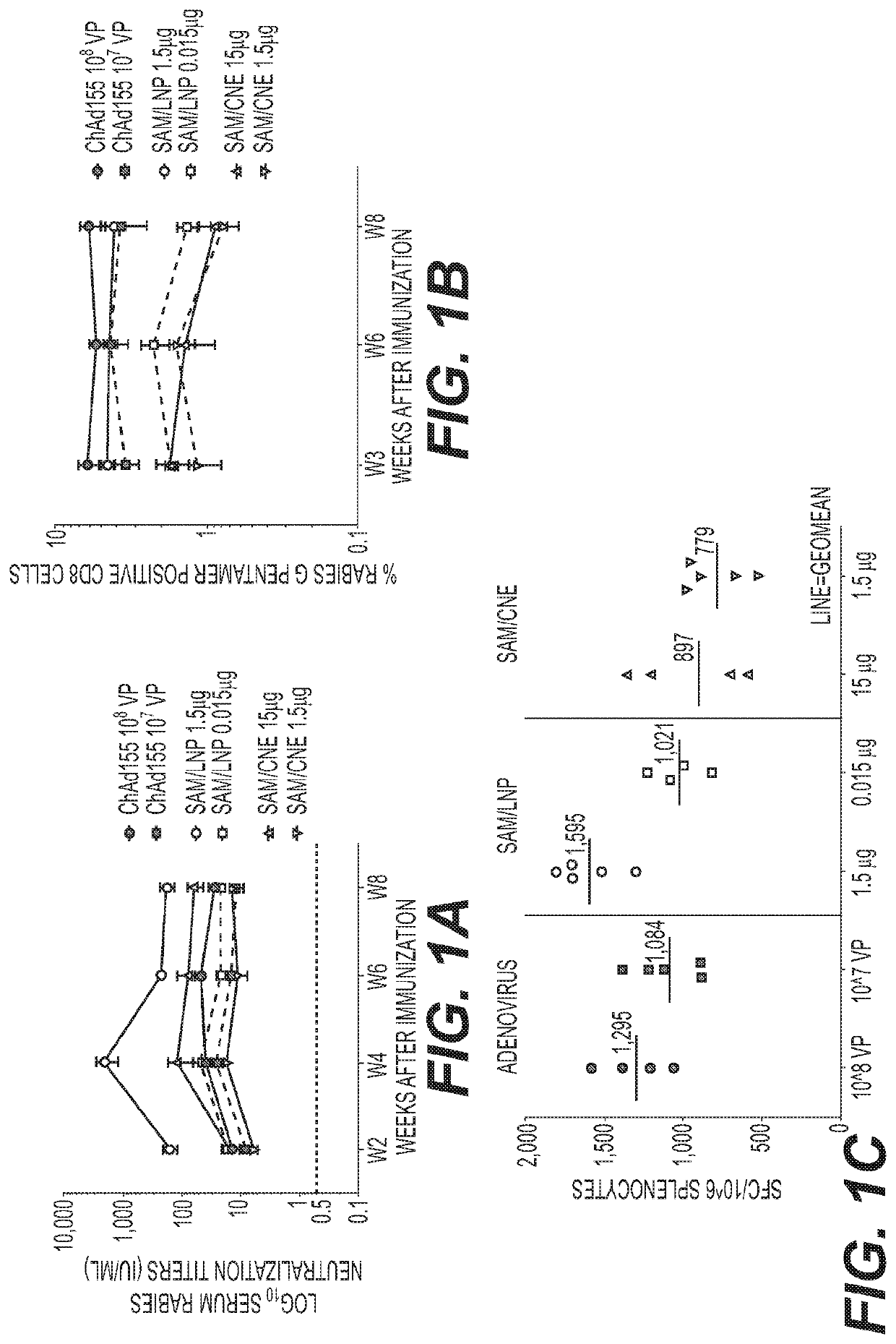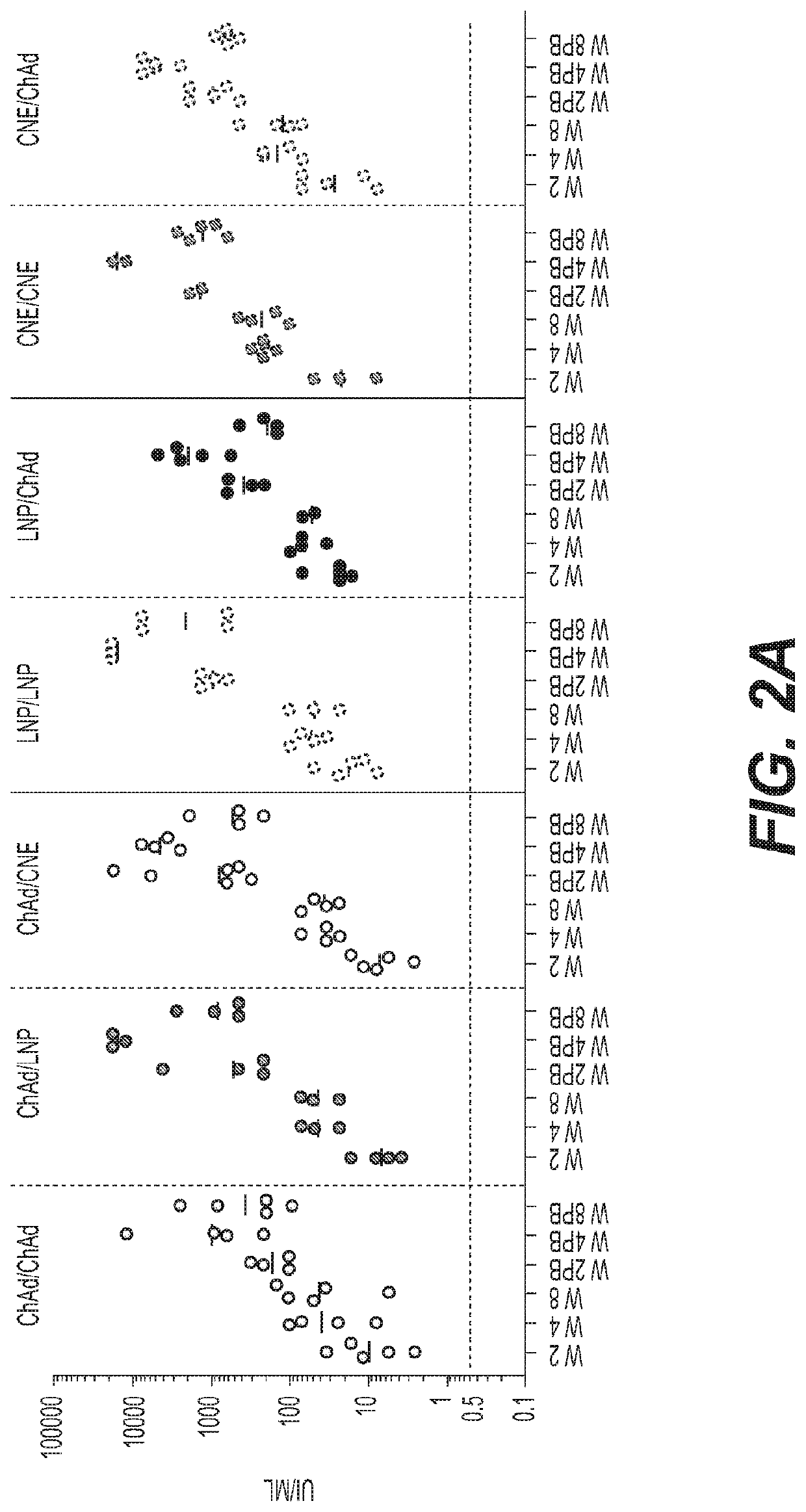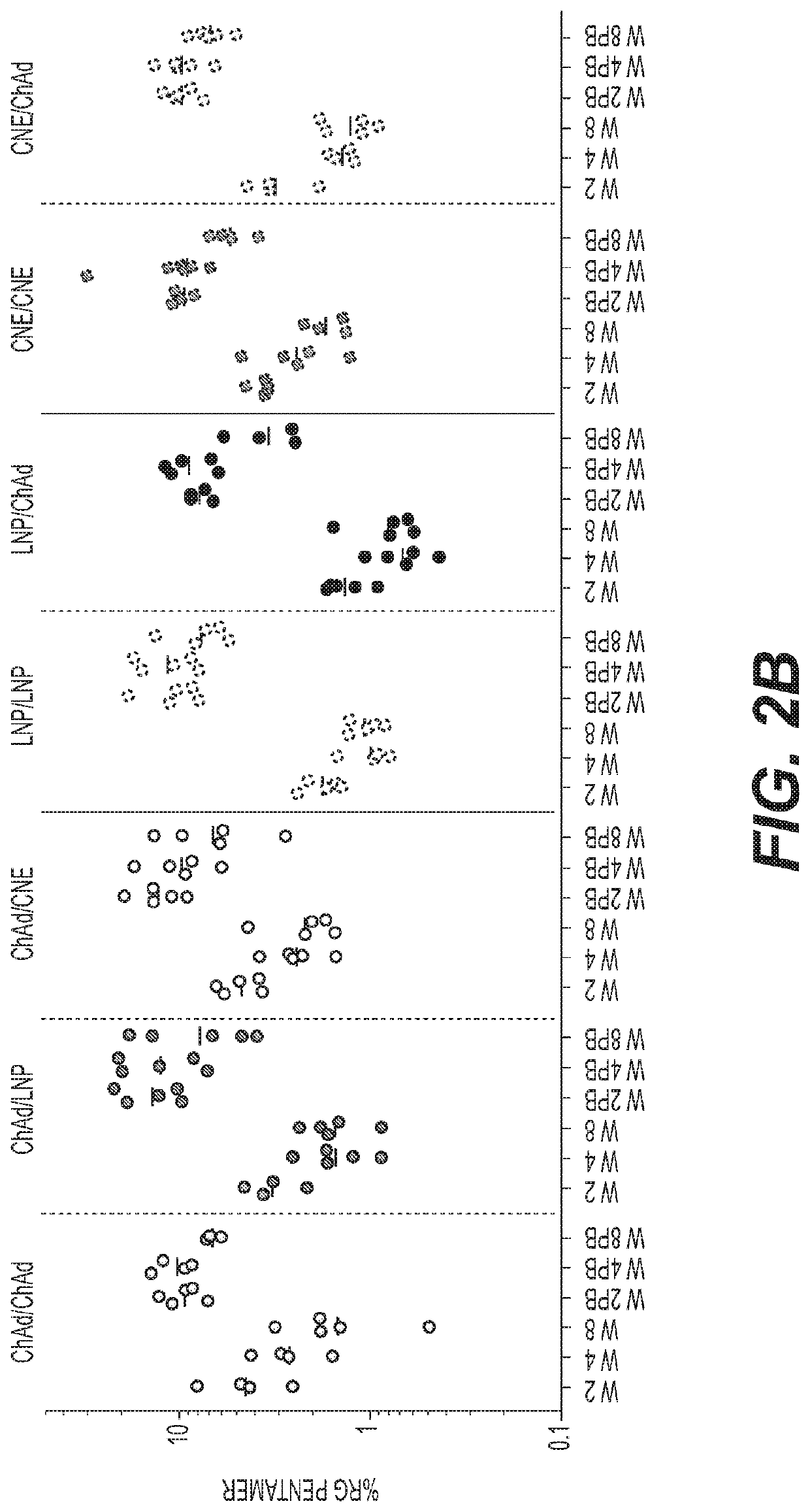Heterologous prime boost vaccine compositions and methods
a vaccine composition and primer technology, applied in the field of infectious diseases, can solve the problems of insufficient single administration of an antigen to confer optimal immunity and/or a long-lasting response, inefficient re-administration, and difficulty in mva viral vector-based vaccine production for clinical applications, and achieve strong and long-lasting immunity
- Summary
- Abstract
- Description
- Claims
- Application Information
AI Technical Summary
Benefits of technology
Problems solved by technology
Method used
Image
Examples
example 1
ycoprotein (RG) as a Model Antigen for a Prime Boost Regimen
[0395]Simian adenoviral vectors encoding a codon pair optimized rabies glycoprotein (RG) antigen transgene sequence (WO 2018 / 104919) were cloned and used to prepare adenoviral particles in chimpanzee adenovirus 155 (ChAd155). Self-amplifying RNA vectors encoding the codon pair optimized rabies glycoprotein antigen sequence were cloned and used to prepare in vitro transcribed capped RNA (SAM-RG).
[0396]Adenoviral vectors (ChAd-RG) and self-amplifying RNA (SAM-RG) were each characterized for in vitro potency and formulated for vaccine injection in mice.
[0397]Adenoviral vectors were formulated in 10 mM Tris pH 7.4, 10 mM histidine, 75 mM NaCl, 5% sucrose, 0.02% polysorbate 80, 0.1 mM EDTA, 1 mM MgCl2 (“Tris-NaCl”). SAM-RG was formulated in either a cationic nanoemulsion (CNE); or as lipid nanoparticles (LNP) with RV39 as the lipid.
Experiment 1: Single Administration of Rabies Antigen
[0398]Six week old female BALB / c mice were al...
example 2
s a Model Antigen for a Prime Boost Regimen
[0410]Adenoviral vectors encoding an HIV1 GAG antigen transgene were cloned and used to prepare adenoviral particles in chimpanzee adenovirus 155 (ChAd155). Self-amplifying RNA vectors encoding the HIV1 GAG antigen sequence were used to prepare in vitro transcribed capped RNA (SAM-HIV1).
[0411]Adenoviral vectors and RNAs were each characterized for in vitro potency and formulated for vaccine injection in mice. Adenoviral particles were formulated in Tris-NaCl. SAM-HIV1 GAG was formulated in lipid nanoparticles (LNP), using RV39 as the lipid.
[0412]Single Administration of HIV1 GAG
[0413]Six week old female BALB / c mice were allocated into groups of twenty and the adenoviruses or RNAs were administered intramuscularly according to the regimens shown in the table below. The animals were bled at weeks 2, 4, 6 and 8 for antibody analysis and T cell response. Five animals in each group were sacrificed at each of weeks 2, 4, 6 and 8 and the spleens w...
experiment 1
[0420]Based on the results of the single administration, the priming doses of 107 vp ChAd-HIV1 and 0.015 μg SAM / LNP-HIV1 were selected for priming in a prime / boost vaccination regimen as the lowest effective doses that were able to confer immunogenicity levels that were comparable between the adenovirus-HIV1 and the RNA-HIV1 vaccines after priming. Two RNA boosting doses were tested, as shown in the table below. The interval between prime and boost was eight weeks.
[0421]Female BALB / c mice six to eight weeks of age were allocated into groups of either ten or twenty and the ChAd or SAM vectors were administered intramuscularly in regimens shown in the table below. The animals in groups 1-3 were bled at 2, 4, 6 and 8 weeks after priming and monthly thereafter. All animals were bled at week 10 and monthly thereafter. A heterologous group primed with adenovirus-HIV1 and boosted with Modified Vaccinia Ankara (MVA) virus was added as a positive control. Serology for neutralizing antibodies...
PUM
| Property | Measurement | Unit |
|---|---|---|
| Composition | aaaaa | aaaaa |
| Immunogenicity | aaaaa | aaaaa |
Abstract
Description
Claims
Application Information
 Login to View More
Login to View More - R&D
- Intellectual Property
- Life Sciences
- Materials
- Tech Scout
- Unparalleled Data Quality
- Higher Quality Content
- 60% Fewer Hallucinations
Browse by: Latest US Patents, China's latest patents, Technical Efficacy Thesaurus, Application Domain, Technology Topic, Popular Technical Reports.
© 2025 PatSnap. All rights reserved.Legal|Privacy policy|Modern Slavery Act Transparency Statement|Sitemap|About US| Contact US: help@patsnap.com



